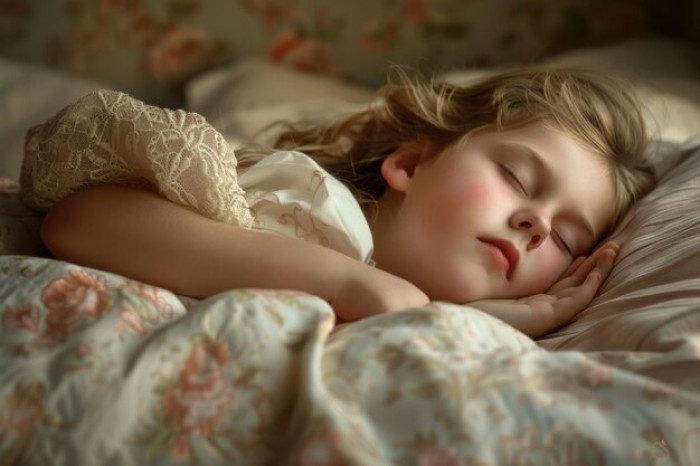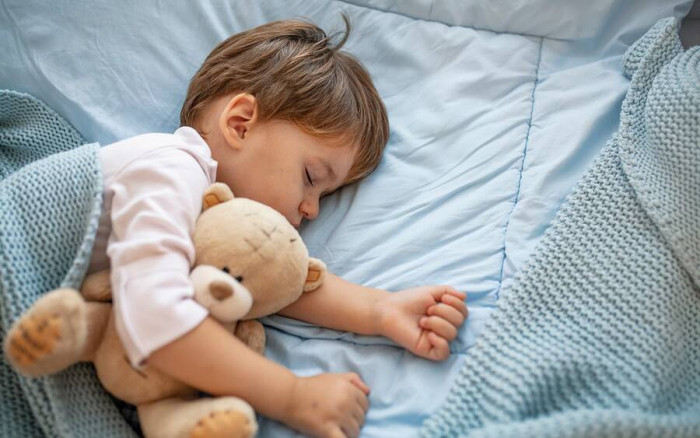Table of Content
In today's digital-first world, sleep challenges among children are becoming increasingly common. Whether it's overstimulation from screens, inconsistent bedtime routines, or discomfort in sleep environments, many kids aren't getting the rest they need. The good news? AI-powered insights are revolutionizing how parents manage and improve their children’s sleep quality, offering actionable data and personalized solutions.
Why Sleep Quality Matters for Children
Sleep is fundamental to a child’s physical and mental development. It supports memory consolidation, emotional regulation, immune health, and even academic performance. However, according to the CDC, nearly 1 in 3 children don't get the recommended amount of sleep, largely due to environmental and behavioral factors.
According to the research, Children 6 to 12 years of age should sleep 9 to 12 hours per 24 hours regularly to promote optimal health. Teenagers 13 to 18 years of age should sleep 8 to 10 hours per 24 hours regularly.
Insufficient sleep is linked to problems with attention, behavior, and learning, as well as increased risks for obesity, diabetes, and depression. Sleep quality is just as important as sleep quantity, with poor sleep often leading to emotional and behavioral issues in children.
How AI is Transforming Kids’ Sleep Health

1. Advanced Sleep Tracking
AI-integrated wearables and sleep monitors provide real-time data on your child’s sleep duration, quality, breathing patterns, and movements. This information helps parents identify disturbances, like frequent awakenings or trouble entering deep sleep, early on.
2. Personalized Sleep Coaching
Using machine learning, modern AI sleep apps can create personalized bedtime routines for children. They suggest ideal sleep/wake times, screen-off periods, and wind-down activities tailored to each child’s biological rhythm.
3. Smart Environment Adjustments
Many AI-powered devices now integrate with smart home systems. They can automatically adjust lighting, temperature, and even emit soothing white noise to create the most comfortable sleep environment possible—something especially helpful for toddlers and light sleepers.
4. Early Detection of Sleep Disorders
AI-driven analytics can highlight patterns that suggest potential sleep issues such as insomnia, restless leg syndrome, or sleep apnea. Catching these signs early allows parents to seek professional advice before problems worsen.
Key Factors Affecting Children’s Sleep Quality
While technology is a powerful tool, several other factors play a significant role in children’s sleep quality:
- Consistent Bedtime Routines:
Establishing regular sleep and wake times, even on weekends, helps regulate the body’s internal clock and improves sleep quality. - Screen Time Management:
Excessive screen exposure before bed can disrupt melatonin production and delay sleep onset. Setting a “media curfew” and keeping devices out of the bedroom can help. - Environment and Comfort:
A quiet, dark, and cool room supports better sleep. Noise, light, or an uncomfortable bed can all contribute to sleep disturbances. - Medical and Emotional Factors:
Medical conditions, allergies, or emotional stress can also impact sleep. Parents should monitor for signs of sleep disorders and consult healthcare professionals if concerns arise.
The Overlooked Element: Bedding and Sleep Comfort
While technology plays a powerful role in enhancing sleep quality, one of the most fundamental factors is still often overlooked—bedding. No AI system can compensate for an uncomfortable mattress, an outdated bed frame, or poorly chosen bed linens.
Here’s how bedding influences your child’s sleep:
- Ergonomic Bed Designs: Bunk beds and cabin beds that offer storage solutions also help declutter the room, making the space more calming and sleep-conducive.
- Mattress Support: An age-appropriate, medium-firm mattress supports growing bones and reduces tossing and turning.
- Breathable Bedding Materials: Cotton or bamboo bedding helps regulate body temperature, preventing overheating at night.
- Allergen-Free Fabrics: Hypoallergenic sheets and pillowcases can significantly improve sleep for children with asthma or allergies.
For high-quality children's beds that combine comfort, space-saving design, and style, explore these premium kids’ bedroom furniture options. The right bedding setup not only complements AI-powered sleep solutions but also enhances their effectiveness.
Combining AI Insights with Smart Sleep Strategies
Pairing AI tools with the right sleep environment yields the best results. Here’s how parents can create the perfect synergy:
- Use AI data to identify sleep issues, like overheating or frequent wake-ups.
- Upgrade bedding and room setup to resolve identified issues (e.g., choosing cooling sheets if your child sleeps hot).
- Incorporate AI-based routines into bedtime while optimizing the bedroom environment with cozy bedding and ergonomic furniture.
- Maintain a consistent sleep routine based on both AI recommendations and environmental comfort.
Quick Tips for Parents
- Track your child’s sleep patterns using both AI tools and observation.
- Prioritize a consistent bedtime and wake time, even on weekends.
- Limit screens at least one hour before bed.
- Ensure the bedroom is cool, quiet, and dark.
- Invest in comfortable, hypoallergenic bedding.
Final Thoughts
Improving children’s sleep isn't just about early bedtimes—it’s about combining smart technology with thoughtful sleep environments. AI tools empower parents with data-driven decisions, while optimal bedding and bedroom setups provide the foundation for healthy rest.
By using both cutting-edge insights and high-quality bedding, parents can create a sleep sanctuary that promotes deep, restorative sleep for their children—night after night.


